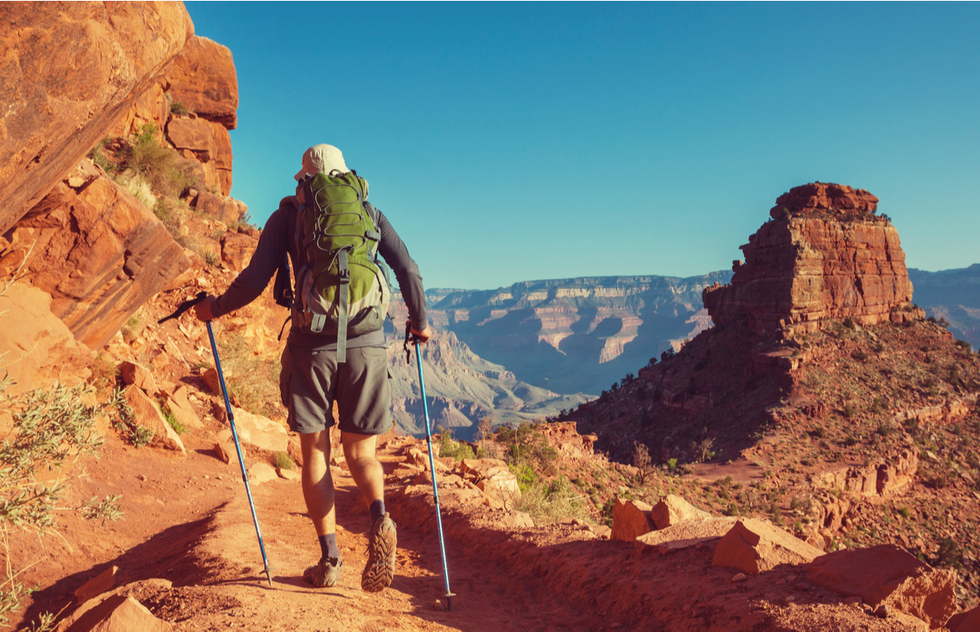In the summertime, hiking can mean withstanding extreme heat—especially as climate change continues to warm up spots that were pretty toasty to begin with.
In Arizona, rangers at Grand Canyon National Park warn that temperatures can get hot enough to melt your shoes.
And that's not just a colorful figure of speech: The heat can literally dissolve the glue that holds hiking boots together.
Grand Canyon is an unforgiving environment. The heat inside the canyon can cause shoes to come apart, and heavy hiking boots can trap sweat and lead to painful blisters. Before setting off on a hike, understand the limitations of yourself and your gear. https://t.co/PLebJv4uTz pic.twitter.com/fvB4DgHcl2
— Grand Canyon NPS (@GrandCanyonNPS) June 22, 2020
For many of us, shoe-melting temps make a convincing argument for not hitting the trails at all until the thermometer decides to be reasonable again. But for those determined to hike despite sweltering conditions, here are some tips to avoid leaving the nature reserve by emergency helicopter.
Put these things in your backpack: water, snacks, a hat, sunscreen, a first aid kid, a flashlight with spare batteries, and a spray bottle to mist yourself. To keep dehydration at bay, consider throwing in some sports drinks with electrolytes, too. The snacks should be salty and high in energy. Berries, granola bars, nuts, pretzels, and trail mix will all do nicely.
Don't hike in the middle of the day. Summer hiking is like comedy: It's all in the timing. And there's nothing funny about being exposed to the desert sun at its most intense—one reason why Lawrence of Arabia isn't exactly a laugh riot. The National Park Service recommends planning your day so that you're not exerting yourself in the heat between 10am and 4pm. That flashlight in your backpack will come in handy if you decide it's safer to be on the trail after the sun begins to set.
Stay fueled. With all the sweating and exercising you'll be doing, you'll need to drink plenty of fluids and eat plenty of calories to prevent exhaustion, muscle cramps, and other unpleasant outcomes. How much to drink depends on your body and on how strenuous the hike is, but if you're toiling on a very rigorous trek during a very hot day, you might need to down as much as a quart an hour—but it all depends on how much you sweat. As serious as dehydration is, too much water and not enough food can leave you with insufficient sodium and electrolytes (that's where those salty snacks come in). Try to maintain a balance among what you eat and drink vis-à-vis what you burn.
Get wet. Whenever you encounter a water source—be it a lake, river, drinking fountain, or garden hose—don't pass up the chance to soak yourself, clothes and all (or at least a cloth for your neck). Opportunities to cool down may be few and far between. But don't drink the water—it may not be safe.
Mind your pooch. If you plan to bring your poor dog on your infernal journey, make sure pets are allowed on the trail—or allowed outside in the first place. In Phoenix, for instance, a regulation forbids owners from hiking with dogs on days when temperatures reach triple digits. If the animal is allowed, you'll want to provide the pooch with plenty of water as well as a collapsible bowl or water bottle for drinking it. To protect paws from blistering surfaces, bring along some durable hiking booties like the kind made by Ruffwear.
After all, if the heat can melt your hiking boots, just think of what it can do to tender puppy pads.






